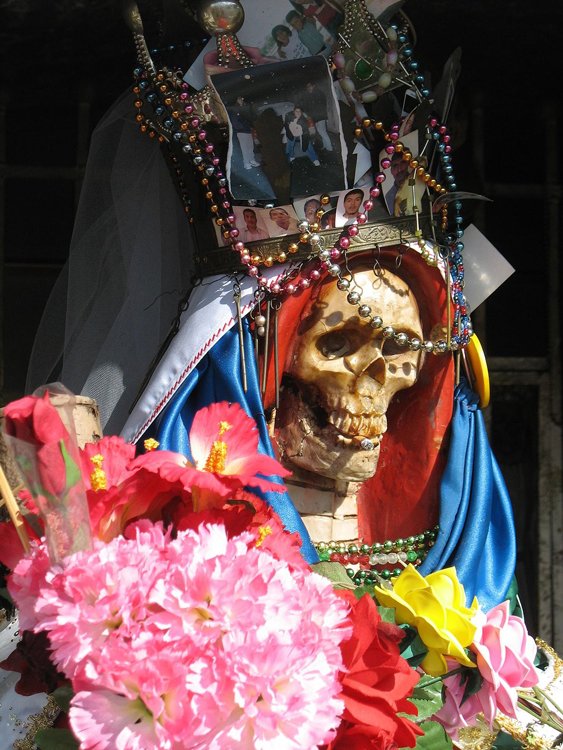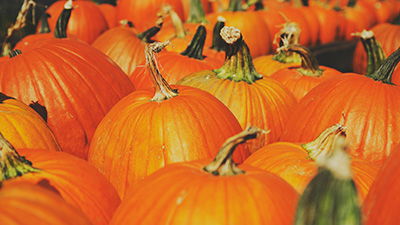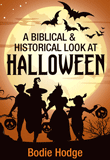El Día de los Muertos
The Mexican Day of the Dead
On the evening of October 31st, 2019, I remember leaving our city of Querétaro, Mexico, on a Primera Plus bus for the three-hour ride to the Mexico City airport. This route is common for me as most flights from Mexico to South America leave from this airport. For this particular trip, I was leaving the next morning to Peru for conferences. On our way out of Querétaro, upon reaching the crest of the hills surrounding the valley in which Querétaro lies, I was able to witness again the preparations for El Día de los Muertos (Day of the Dead). A line of vehicles decorated in flowers and images of the Virgen de Guadalupe (patroness Saint Mary for the Mexicans) made their way up the rocky roads. Likewise, in the back of pickup trucks, the ever-morbid Santa Muerte (Saint Death), who is a highly venerated skeletal statue in Mexico, rocked as the vehicle fought its way over the many ditches. I clearly remember wondering how many Answers in Genesis supporters knew of the profound darkness where God has sent our ministry to shine his light.
It is now October 2020, and we are all coming through a hard year. If you are in the USA, you are nearing the yearly celebration of Halloween in your surrounding culture. Whether or not it will be celebrated this year due to the current COVID-19 situation, it would be of benefit to consider how or if a Christian should participate. The history of Halloween is fascinating and stretches over centuries of tradition and practice.1
Spreading Holiday
In Mexico, we also have a similar scene. Our neighbors to the north (USA) have influenced Mexican culture some, and although Día de los Muertos is celebrated on November 1–2, on October 31, many children partake in a version of “trick or treat” called pedir calaverita or “ask for little skull.” Notwithstanding, the simple asking of candy doesn’t hold a candle to the preparations for and practice of the Día de los Muertos.
Since the release of Disney’s Coco in 2017, the world was only given an impartial, childish version of this pre-colonial celebration of the dead.
Since the release of Disney’s Coco in 2017, the world was only given an impartial, childish version of this pre-colonial celebration of the dead. Although this yearly event is now mixed and adjusted to the Roman Catholic tradition and calendar, it remains mostly true to its native practice. This celebration, known has Hanal Pixán (food of souls) by much of the Yucatan Peninsula population and El Día de los Muertos throughout most of the rest of Mexico, is far from the cleaned-up, jovial, and sentimental story portrayed in the movie.
On these two days (originally only one day) and depending on where one is in Mexico, families flock to the local cemeteries with Cempasúchil flowers (also known as Mexican marigold , Tagetes erecta), along with the food and drink that were favored in life by their deceased loved ones. In parts of Yucatán, where Mayans live, the bones of deceased relatives are taken out of cases or boxes and cleaned up to be displayed in the open for this event. Also, many people partake in parades after dressing up in colorful garb and painting their faces to resemble skulls. I have to admit that the array of colors and designs are undoubtedly impressive on an esthetic level. The once dull concrete cemeteries and cobble streets come to life with overwhelmingly bright colors, and the smaller towns are filled with the smell of special flowers and food to accompany the buzz of activity in preparation. Nevertheless, we must not be too fearful of 21st Century’s “cultural appropriation and toleration” as to shy away from recognizing the dark spiritual message and identifying exactly who or what is being venerated.
Evolution of the Holiday
In order to understand Diá de los Muertos as seen today, it would help to understand its origins.
In order to understand Diá de los Muertos as seen today, it would help to understand its origins. Generally, for the indigenous populations of Mesoamerica, much attention was given to death. Such can be seen by a plethora of skulls along with sculptures and carvings of gods and goddesses being dismembered and sacrificed in places like El Templo Mayor (The Great Temple) of Moctezuma (or Montezuma) in the grand El Zócalo of Mexico City. Also, a common practice was ancestor worship in an effort to appeal to the dead for their influence on the luck of the living. The version of “Christianity” that was offered to them by the Spanish conquistadores was one more of imagery for better luck and crops. Bernal Díaz, the yeoman who accompanied Hernan Cortés, wrote in his log about how Cortés, after winning over the Caciques (the local chiefs), would make an alter and erect an image of the Virgin Mary and a cross. After a mock mass in front of the leaders:
Cortes once more commended the blessed image and cross to their care, telling them always to keep the place well cleaned and swept and decked with branches, and to worship it if they wanted to enjoy good health and harvests.2
One of the practices that the natives celebrated was that of venerating the dead, and this took place annually at the beginning of summer.
From there, most of the Roman Catholic tradition and faith was adopted in a way to adorn or slightly modify previous beliefs and practices. One of the practices that the natives celebrated was that of venerating the dead, and this took place annually at the beginning of summer. As far as we know, the practice was very similar as is described here, but of course, without the Roman Catholic icons and the “Our Fathers” and “Hail Marys” that are presently added to verbal incantations. According to Patrick Johansson, an expert in the Nahuatl customs, the pre-Hispanic origins were based on:
The worship of the deceased and more specifically with the mortuary rituals destined to direct the "soul" of the deceased towards the corresponding space-time of death, to culturally assume the organic degradation of the corpse, and to cathartically resolve the pain of the living.3
As with much of native customs, this celebration went through syncretistic adjustments and in this case, changed the date to November 1 to match the All Saints Day of the Catholic calendar. This was, by the way, the best match for the sake of similarity.
All Saints Day is a special feast day on which Catholics celebrate all the saints, known and unknown. While most saints have a particular feast day on the Catholic calendar (usually, though not always, the date of their death), not all of those feast days are observed. And saints who have not been canonized — those who are in Heaven, but whose sainthood is known only to God — have no particular feast day.4
Although the Roman Catholic Church denounces any worship of this figure, she is a patroness saint to so many who believe that she has great powers.
Besides visits to the local cemetery, many enjoy colorful parades that march through the town streets with the infamous Nuestra Señora de la Santísima Muerte (Our Lady of the Saint/Holy of holies Death) or commonly called Santa Muerte (Saint Death) is now a lady skeleton, as previously mentioned, dressed much like many saints of past paintings like those of Saint Francis of Assisi. She is one of the most prominent figures in this celebration today. Although the Roman Catholic Church denounces any worship of this figure, she is a patroness saint to so many who believe that she has great powers. She is said to be dangerous if the solicitors of her favors do not follow through with their vows, which are usually the making of a permanent shrine to her in their homes or at least the wearing of her figure on their necklace.
Death Is the Enemy
As for Christians, we know (or at least we should know) that all references in the Bible about communicating with the dead are explicit prohibitions (i.e., Deuteronomy 18:9-12).
And just as it is appointed for man to die once, and after that comes judgment. Hebrews 9:27 ESV
Our relativistic culture today wants to put every culture and practice on an equal scale, wherein any criticism can only be out of closed-minded bigotry. But God tells us in his Word not to be conformed to this world (Romans 12:1–2) and that his Word is the absolute truth (John 17:17). Therefore, we cannot join Disney with our postmodern culture and make light of a celebration that seeks to worship death itself,5 help the dead find their place in the afterlife, or even revisit us in a spiritual sense in this one. My professor Dr. Sam Waldron rightly says, “death is the unnatural and violent separation of the body from the spirit.” It is nothing to be celebrated. Hebrews 2:14–15 teaches us that Satan has the power of death and that death has come as a consequence of man’s sin (Romans 5:12), and an enemy that Christ will destroy (1 Corinthians 15:25–26).
So, where does that leave Christians who glory in the cross of Jesus, a symbol of death? This is where the divine beauty of the gospel really shines. God used death to defeat death. Christ Jesus, God’s only eternal Son, took our guilt, shame, and death upon himself on the cross, then gloriously rose from the dead on the third day. We don’t celebrate death, we glory in the death and resurrection of Jesus, who defeated Satan and death. We have the gospel of Jesus Christ, and it is the only direction that we can give others for entering glory after this life. God is eternally all-powerful and eternally all-knowing, but his patience with us is temporal and has a fixed expiration date. Once we die, there is nothing that we or anyone else can do for us. Our opportunity to be forgiven and placed in a right relationship with God through Jesus is only during our lifetime here. We are not left to wonder how to influence a place of rest for our beloved deceased. We share the gospel of Jesus Christ with all in life before their imminent encounter with God and his holiness upon their bodily death.
Also, we serve a holy and sovereign God, who “works all things according to the counsel of his will” (Ephesians 1:11). We don’t need to (nor should we!) ask the spirits of the dead for favors, but if we ask anything in the name of Jesus that coincides with his will, he will give it to us (1 John 5:14–15).
In conclusion, as in everything, we must see beyond the façade of culturally rich heritage and bright, beautiful flowers and décor. We, as followers of Jesus Christ, must see through biblical lenses with horror and lament at the multitudes who worship, serve, and trust in death itself. We must exclusively trust in our Creator and Redeemer who left death obsolete for all eternity. Every day is a day that the Lord has made, which includes October 31 – November 2. Let’s celebrate the life, death, and resurrection of our precious Lord and Savior Jesus Christ and share him and his Word with those who are still under the threat, power, and deceit of Satan and la muerte.
Footnotes
- Bodie Hodge, “Halloween Origin: Halloween History and the Bible,” October 29, 2013, https://answersingenesis.org/holidays/halloween-history-and-the-bible/.
- Bernal Diaz, The Conquest of New Spain, Penguin Books, London, 1963, página 83.
- Patrick Johansson Keraudren, http://www.historicas.unam.mx/publicaciones/revistas/nahuatl/pdf/ecn34/678.pdf, translated from Spanish to English, accessed October 24, 2020.
- Scott P. Richert, “Learn Religions”, https://www.learnreligions.com/what-is-all-saints-day-542459, June 25, 2019, accessed October 24, 2020.
- Some may take offense to the claim that they are worshipping death, but for an example of how Santa Muerte is worshipped, http://www.santamuerte.org/oraciones/3745-plegaria-de-proteccion.html, accessed August 10, 2016.
Recommended Resources

Answers in Genesis is an apologetics ministry, dedicated to helping Christians defend their faith and proclaim the good news of Jesus Christ.
- Customer Service 800.778.3390
- Available Monday–Friday | 9 AM–5 PM ET
- © 2025 Answers in Genesis








